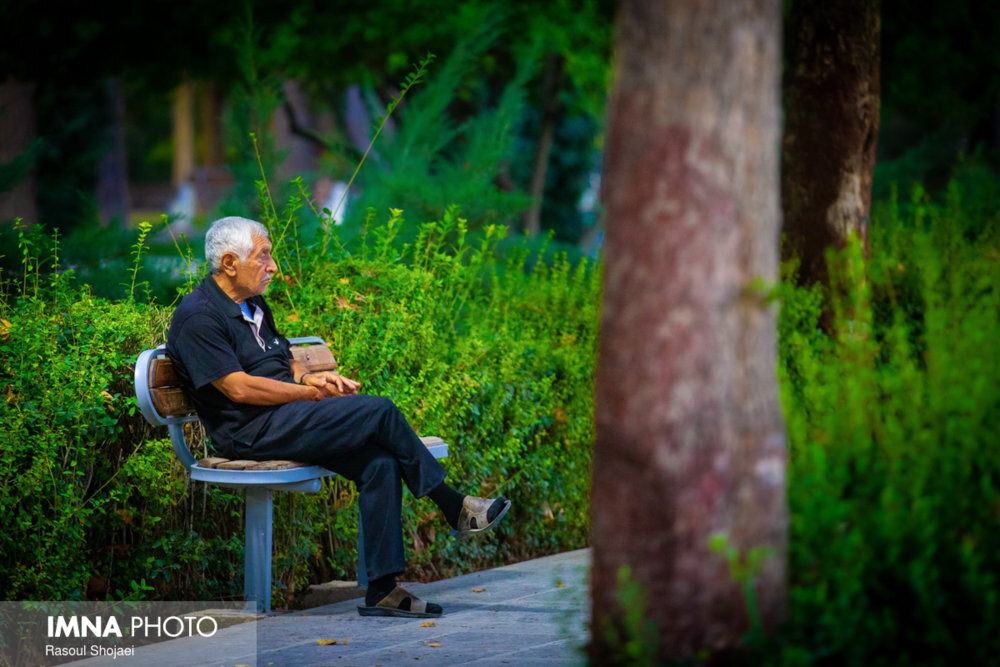Iran on the verge of aging crisis

TEHRAN – Over the [Iranian calendar] year 1410 (March 2031-March 2032), the elderly population will reach 13.5 million people, which is 14 percent of the country’s population, and Iran will officially be an old country.
Currently, the elderly population is 9.2 million, which constitutes 7.10 percent of the country's population.
The aging issue in Iran is very special from three perspectives, firstly, the fast pace of aging. Second, along with these very rapid quantitative changes, qualitative changes in aging such as feminization are happening.
The third feature of aging in Iran is that the progress in the field of health and nutrition has increased life expectancy, and besides, due to the decrease in the fertility rate, the infrastructure for the elderly population is not available in the country.
“We could not use the opportunity of the open demographic window of Iran, where the productive forces of 14 to 65 years were more than two-thirds and the under-recruited forces were less than two-thirds to fix the economic situation and the infrastructure that is necessary to face the aging issue, so that economic problems will multiply,” Hesamoddin Allameh, the secretary of the National Council of the Elderly, said.
He made the remarks on the occasion of the International Day of Older Persons.
On 14 December 1990, the United Nations General Assembly designated October 1 as the International Day of Older Persons.
This year’s theme is “Resilience of Older Persons in a Changing World.”
In 2032, when about 14 percent of Iran's population becomes elderly, Iran is officially included in the list of elderly countries. Now 16 percent of the population of Gilan province is elderly and it is the oldest province in Iran.
The pension funds, which are now bankrupt, bear additional pressure due to the high population of the retired, he lamented.
“Due to the increase in divorce, permanent celibacy, increase in infertile couples, increase in childless couples, increase in couples who have chosen to have no children or have only one child, so we will face seriously the phenomenon of the alone senior citizens.
Therefore, there is no one to take care of the elderly, and as a result, we need a lot of nursing homes or we are forced to increase home-based models and daycare centers,” he explained.
Due to the fact that there is no national organization for the elderly and due to the lack of infrastructure, the consequences of the crisis of the elderly population seriously threaten the country, he regretted.
“We need a comprehensive bill for the rights of the elderly that lists the rights of the elderly and the tasks of the institutions,” he concluded.
Iran's life expectancy index higher than global average
The average life expectancy is around 72, 74, and 76 years, which is higher than the global average, head of the Medical Council of Iran, Mohammad Raeiszadeh has said.
The life expectancy index is important in evaluating the state of healthcare in the country, which currently has a good status in Iran.
In 1979, life expectancy was 55 years in the country and lower than the world average. The norm of the world at that time was 58 and 59 years. In 1990, it reached almost 65 years, and it is currently higher than the world average.
According to demographers, developed countries increase their life expectancy by reducing mortality among the elderly. But in developing countries like Africa, improvements in life expectancy are achieved by falling child mortality.
Demographic issue
Today, the country's fertility rate has reached about 1.6 children per woman, however, it was 6.5 children per woman, in 1986. The lowest fertility rate in the whole region of West Asia, North Africa, and the MENA region is recorded for Iran.
While 1,594,000 births were registered in the [Iranian calendar] year 1394 (March 2015-March 2016), the downward trend continued annually to the point that the number of births reached about one million in the [Iranian calendar] year 1399 (March 2020-March 2021).
In other words, the country lost more than 550,000 births in five years.
The fertility rate declined to 1.71 children in the past [Iranian calendar] year (March 2020-March 2021), reaching below the replacement level, according to the report released by the Statistical Center of Iran.
Replacement level is the amount of fertility needed to keep the population the same from generation to generation. It refers to the total fertility rate that will result in a stable population without it increasing or decreasing.
Nicholas Eberstadt, the Henry Wendt Chair in Political Economy at the American Enterprise Institute (AEI), wrote in an article in July 2020 that the fertility rate in Iran has dropped by 70 percent over the past 30 years, which has been the highest decline in human history.
Seyed Hamed Barakati, deputy health minister for family and school population, said in May 2021 that Iran’s population growth rate has decreased to less than one percent for the first time over the past four decades.
FB/MG
Leave a Comment